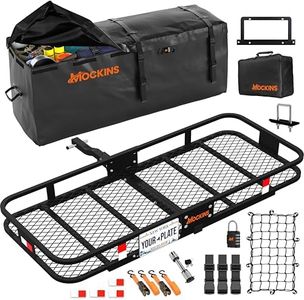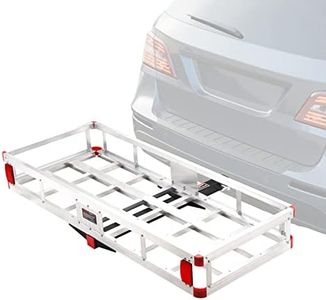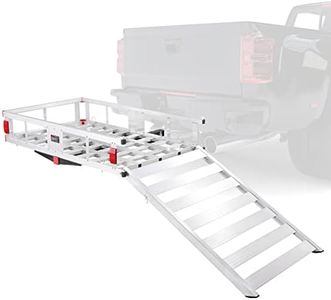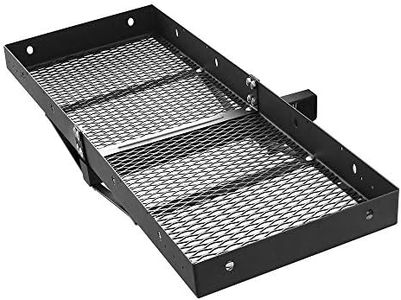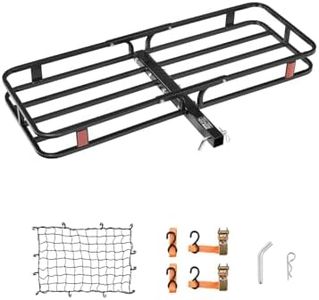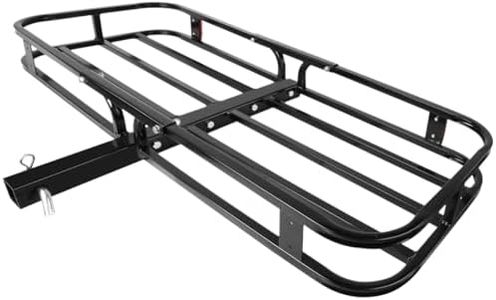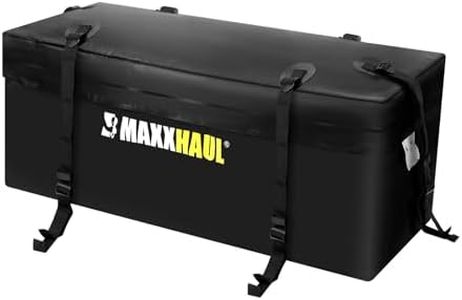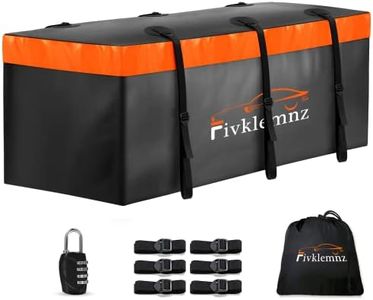We Use CookiesWe use cookies to enhance the security, performance,
functionality and for analytical and promotional activities. By continuing to browse this site you
are agreeing to our privacy policy
10 Best Hitch Mount Cargo Carriers
From leading brands and best sellers available on the web.Buying Guide for the Best Hitch Mount Cargo Carriers
Choosing the right hitch-mount cargo carrier is all about balancing your transport needs with your vehicle’s capabilities. These carriers are a practical way to expand your vehicle’s cargo space, making them perfect for road trips, camping, or simply hauling bulky items. Knowing what you’ll primarily use your carrier for will help you focus on the most important features and ensure a safe, effective fit for both your car and your cargo.Weight CapacityWeight capacity refers to the maximum load the cargo carrier can safely support and is a crucial spec to consider. Carriers typically range from about 300 to 600 pounds. If you plan to haul heavy gear like coolers, generators, or lots of luggage, opt for a carrier with a higher capacity. Lighter loads like camping gear or sports equipment may not require as much. Always check your vehicle’s own hitch and tongue weight capacity to stay within safe limits.
Carrier DimensionsThe size of the carrier tells you how much space you’ll have to stow your items. Dimensions vary—some carriers are compact for just a few bags, while others offer large platforms suitable for multiple suitcases or large gear. Bigger isn’t always better; make sure the carrier fits your typical load and doesn’t stick out beyond your vehicle excessively, which could affect driving or parking.
Material and BuildHitch-mount cargo carriers are usually made of steel or aluminum, each with its pros and cons. Steel options are sturdy and often handle more weight, but are heavier and can rust if not coated. Aluminum is lighter and rust-resistant, though sometimes at the expense of load capacity. Choosing the right material depends on how often you’ll use the carrier, the weight of your loads, and if you expect exposure to rain or road salt.
Hitch CompatibilityThis spec indicates what hitch size the carrier fits on—common sizes are 1.25-inch and 2-inch receivers. Larger hitches usually allow higher weight and larger carriers. Check your vehicle’s hitch size before buying, and ensure the carrier matches. Adaptors are available, but direct fits are more secure.
Foldability and StorageSome carriers have fold-up designs, allowing you to flip the platform up when not in use. This can be a major convenience if you don’t want to remove the carrier between trips, or if you run into tight parking spaces. Others are fixed and need to be stored elsewhere when not in use. Consider how often you’ll need the space behind your vehicle or how much garage storage you have.
Sidewalls and Security FeaturesMany carriers include side rails or walls to keep items from sliding around. Some come with built-in tie-down points or locks. Taller sides offer more security for loose or tall items, while lower profiles are easier to load. Your choice depends on what you plan to carry—if you’ll have oddly-shaped or stackable cargo, higher rails and multiple tie-down points are helpful.
Ease of Assembly and InstallationSome cargo carriers come ready to use, while others require assembly. Kits that are easy to assemble and install can save you time and stress, especially if you’re not very handy. If you want to be able to quickly attach or remove the carrier, look for models known for simple mounting systems.
